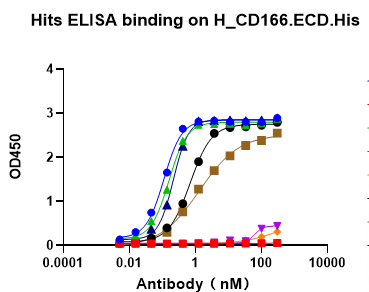FDX1 overexpression inhibits the growth and metastasis of clear cell renal cell carcinoma by upregulating FMR1 expressionYang, Wu, Jiang
et alCell Death Discov (2025) 11 (1), 115
Abstract: Kidney cancer has caused more than 150,000 deaths in 185 countries around the world and is a serious threat to human life. Clear cell renal cell carcinoma (ccRCC) is the most common type of kidney cancer. FDX1, a crucial gene for regulating copper death, plays an important role in tumors. However, its specific role in ccRCC remains unclear. In this study, by analysing data from the TCGA-KIRC and GEO databases and validation in clinical samples from our center, the expression characteristics of FDX1 and its relationship with tumor clinicopathological features and patient prognosis were clarified; the effects of FDX1 overexpression on ccRCC cell proliferation, apoptosis, migration, and invasion were determined via cell phenotype experiments and mouse orthotopic renal tumor growth models; and the downstream regulatory mechanism of FDX1 was determined via TMT proteomic sequencing, Co-IP assays, and RNA-sequencing detection. Our results confirmed that FDX1 was significantly underexpressed in ccRCC and that reduced FDX1 expression was associated with adverse clinicopathologic features and poor prognosis. FDX1 overexpression markedly inhibited the proliferation, migration, and invasion of ccRCC cells and promoted cell apoptosis in vitro. Mechanistically, FDX1 bound to the FMR1 protein and upregulated its expression, subsequently restraining Bcl-2 and N-cadherin expression and enhancing ALCAM, Cleaved Caspase-3, and E-cadherin expression. In mouse models, FDX1 overexpression significantly suppressed the growth and metastasis of renal tumors, but this inhibitory effect was markedly reversed after FMR1 expression was knocked down. Thus, our results confirmed that FDX1 expression is significantly reduced in ccRCC and serves as a prognostic marker for ccRCC patients and that its overexpression suppresses the growth and metastasis ability of ccRCC by promoting the expression of FRM1.© 2025. The Author(s).
Single-cell profiling reveals the intratumor heterogeneity and immunosuppressive microenvironment in cervical adenocarcinomaPeng, Yang, Ao
et alElife (2025) 13
Abstract: Cervical adenocarcinoma (ADC) is more aggressive compared to other types of cervical cancer (CC), such as squamous cell carcinoma (SCC). The tumor immune microenvironment (TIME) and tumor heterogeneity are recognized as pivotal factors in cancer progression and therapy. However, the disparities in TIME and heterogeneity between ADC and SCC are poorly understood.We performed single-cell RNA sequencing on 11 samples of ADC tumor tissues, with other 4 SCC samples served as controls. The immunochemistry and multiplexed immunofluorescence were conducted to validate our findings.Compared to SCC, ADC exhibited unique enrichments in several sub-clusters of epithelial cells with elevated stemness and hyper-malignant features, including the Epi_10_CYSTM1 cluster. ADC displayed a highly immunosuppressive environment characterized by the enrichment of regulatory T cells (Tregs) and tumor-promoting neutrophils. The Epi_10_CYSTM1 cluster recruits Tregs via ALCAM-CD6 signaling, while Tregs reciprocally induce stemness in the Epi_10_CYSTM1 cluster through TGFβ signaling. Importantly, our study revealed that the Epi_10_CYSTM1 cluster could serve as a valuable predictor of lymph node metastasis for CC patients.This study highlights the significance of ADC-specific cell clusters in establishing a highly immunosuppressive microenvironment, ultimately contributing to the heightened aggressiveness and poorer prognosis of ADC compared to SCC.Funded by the National Natural Science Foundation of China (82002753; 82072882; 81500475) and the Natural Science Foundation of Hunan Province (2021JJ40324; 2022JJ70103).© 2024, Peng, Yang et al.
Single-cell analysis of CD14+CD16+ monocytes identifies a subpopulation with an enhanced migratory and inflammatory phenotypeRuiz, Calderon, Leon-Rivera
et alFront Immunol (2025) 16, 1475480
Abstract: Monocytes in the central nervous system (CNS) play a pivotal role in surveillance and homeostasis, and can exacerbate pathogenic processes during injury, infection, or inflammation. CD14+CD16+ monocytes exhibit diverse functions and contribute to neuroinflammatory diseases, including HIV-associated neurocognitive impairment (HIV-NCI). Analysis of human CD14+CD16+ monocytes matured in vitro by single-cell RNA sequencing identified a heterogenous population of nine clusters. Ingenuity pathway analysis of differentially expressed genes in each cluster identified increased migratory and inflammatory pathways for a group of clusters, which we termed Group 1 monocytes. Group 1 monocytes, distinguished by increased ALCAM, CD52, CD63, and SDC2, exhibited gene expression signatures implicated in CNS inflammatory diseases, produced higher levels of CXCL12, IL-1Ra, IL-6, IL-10, TNFα, and ROS, and preferentially transmigrated across a human in vitro blood-brain barrier model. Thus, Group 1 cells within the CD14+CD16+ monocyte subset are likely to be major contributors to neuroinflammatory diseases.Copyright © 2025 Ruiz, Calderon, Leon-Rivera, Chilunda, Zhang and Berman.
Portable Fluorescence Microarray Reader-Enabled Biomarker Panel Detection System for Point-of-Care Diagnosis of Lupus NephritisTeymur, Hussain, Tang
et alMicromachines (Basel) (2025) 16 (2)
Abstract: Point-of-care (POC) testing has revolutionized diagnostics by providing rapid, accessible solutions outside traditional laboratory settings. However, many POC systems lack the sensitivity or multiplexing capability required for complex diseases. This study introduces an LED-based fluorescence reader designed for POC applications, enabling multiplex detection of lupus nephritis (LN) biomarkers using a biomarker microarray (BMA) slide. The reader integrates an LED excitation source, neutral density (ND) filters for precise intensity control, and onboard image processing with Gaussian smoothing and centroid thresholding to enhance signal detection and localization. Five LN biomarkers (VSIG4, OPN, VCAM1, ALCAM, and TNFRSF1B) were assessed, and performance was validated against a Genepix laser-based scanner. The LED reader demonstrated strong correlation coefficients (r = 0.96-0.98) with the Genepix system for both standard curves and patient samples, achieving robust signal-to-noise ratios and reproducibility across all biomarkers. The multiplex format reduced sample volume and allowed simultaneous analysis of multiple biomarkers. These results highlight the reader's potential to bridge the gap between laboratory-grade precision and POC accessibility. By combining portability, cost-effectiveness, and high analytical performance, this fluorescence reader provides a practical solution for POC diagnostics, particularly in resource-limited settings, improving the feasibility of routine monitoring and early intervention for diseases requiring comprehensive biomarker analysis.



 +添加评论
+添加评论






















































 膜杰作
膜杰作 Star Staining
Star Staining

















